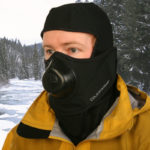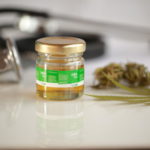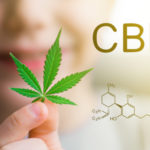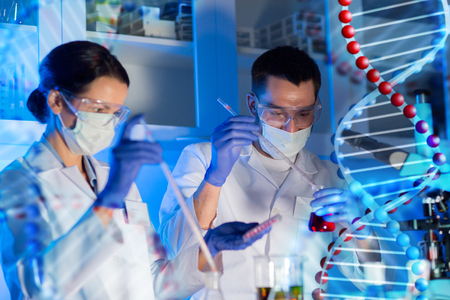This year, I am going to talk more about what I call the miracle plant. That plant is industrial hemp, however, it is not marijuana and will not make you high if grown at the certified USDA level of less than .3% THC. Well, you could get high on it, but only if you could smoke 1,500 pounds per hour. This truly is a plant that is a miracle, truly green. It will produce as much fiber on one acre as 4 acres of forest. And, the uses are vast. Please see last months My Health Express. This article will focus on the endocannabinoid system.
Your skin is the main boundary of the immune system and weighs about 25 pounds for the average adult. Essentially, the skin is ‘the wall’ that keeps out bacteria, debris, water, and solar radiation. It ensures that you system is closed and protected. While serving as a barrier it is also flexible, absorbent but not porous, and durable and strong enough to withstand a lifetime of wear. It is comprised of three layers – epidermis, dermis, and hypodermis, each serving a different function.
Epidermis
The epidermis is the outer layer of skin – the part you see. And, it’s the main barrier, the physical barrier for keeping out infection via bacteria and other sources. It also contains nerve endings to sense pain, as well as melanin-producing cells that give you your skin pigmentation.
Dermis
This layer is thicker than the epidermis and is the base for sweat glands, nerve cells, sebaceous glands (they produce the oil that helps cover our skin), and hair follicles. It is comprised mostly of collagen, reticular fibers, and elastic tissue that gives it flexible strength. This layer also includes efferent (control rather than sense) neurons that govern capillary dilation and lymph networks to help protect the body from infections from cuts, bites, scrapes and other injuries.
Advertisement: Kanbala (click on photo for more info)
Hypodermis (subcutis)
This is the deepest layer of the skin, underlying the other two layers. If you get a blister, this layer becomes exposed, which can be a problem. It is because this layer has even more immune-system tissue, fact cells (these provide insulation from external temperatures, padding from injury and storage of fuel for activities).
Endocannabinoid System in the Skin
The endocannabinoid system (ECS) is the sum of all the cannabinoid receptors and endogenous ligands (like anandamide) that bind to the receptors, as well as their biosynthetic pathways, and degrading enzymes. However, it’s not just the effects of this system short and long term or just the receptor to ligand binding. It’s more about homeostasis.
There is a mountain of evidence, termed anecdotal evidence and that is homeostasis related, that demonstrate positive results of phytocannabinoid treatment, i.e, plant CBD’s. These homeostasis-related conditions seem to have no known cause or cure. And for this reason, endocannabinoid modulation has proven to be highly effective for treatment of many diverse conditions. Of note is skin and hair growth.
Skin and hair growth
One of the better-understood roles of the ECS in the skin is hair production via hair follicles and the sebaceous glands associated with them. What is unique is that the latter have a high percentage of CB1 receptors, which are responsive to the endocannabinoid AEA (anandamide) and to phyto-cannabinoids like THC and CBC. Hair growth shows a negative correlation with activation of these receptors, so scientists believe that the ECS controls human hair growth via a negative feedback loop. This process is currently undefined thus, an ECS explanation is logical.
While most people are familiar with THC and CBD, there are many chemicals in marijuana that contribute to its diverse effects on the human body. These effects include protecting neurons from damage, pain relief, suppressing nausea and vomiting, and many more. Cannabichromene (CBC) is an important chemical in marijuana that demonstrates the complexity of how the cannabis plant works.
Immuno-stimulation
Although the ECS plays a very intricate and sophisticated role in the immune system, the precise mechanisms of its various roles are not well documented. However, we do know that ECS regulates (up and or down) the overall level of cellular activity in immune cells, and it also regulates the rate at which apoptosis, or programmed cell death occurs, which is a vital function of the skin and its ability to remain pliable, flexible, and youthful.
Additionally, the skin also is prone to inflammation and allergic reactions because it is often the first to meet foreign substances.
Due to climate, water, temperature, etc., the ECS plays a very robust role in the down-regulation of chemokines and cytokines that produce inflammation and the pain associated with it. Localized topical cannabinoid treatment of allergy-induced inflammatory responses (such as putting CBD on hives) diminished the symptoms of inflammation immediately, in a CB1 dependent manner, proving that cannabinoid receptors are involved in the negative feedback of painful inflammatory responses. A similar reaction occurs when CBD skin lotions are applied, which helps firm and moisturizes the skin due to ECS reactions that typical skin lotions cannot match. We’ll do an article later that gets more into the science of this phenomena.








